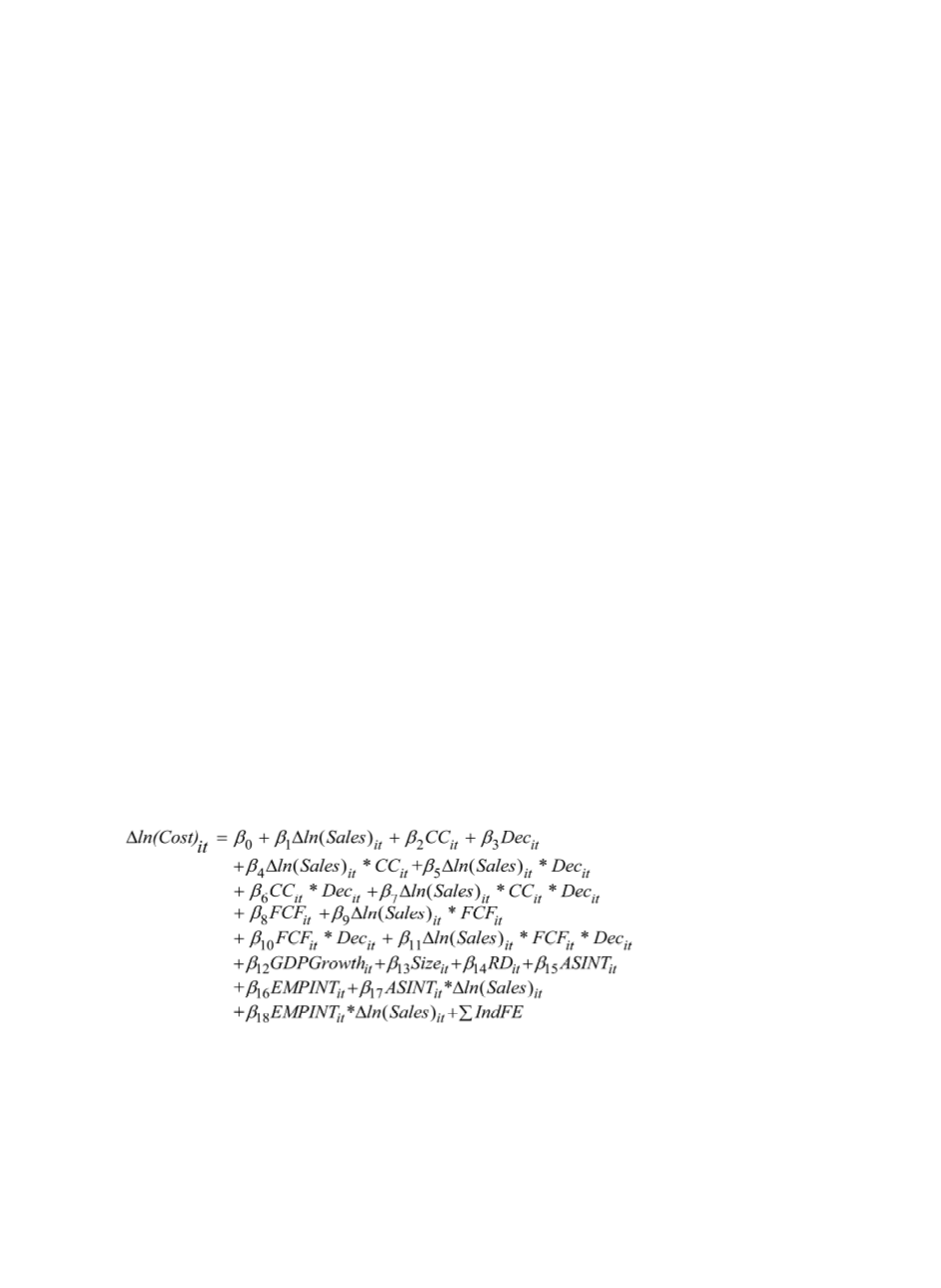

顧客與供應商關係與成本結構
270
In summary, Table 3-Table 5 show that SG&A cost, cost of goods sold (COGS) and
total operating costs (OC) exhibit cost stickiness, and its cost stickiness decrease with the
level of customer concentration. This suggests that managers’ cost stickiness is not
concentrated in any specific cost category, and the impact of customer concentration of
cost behaviors can apply to all major cost categories.
6. Additional Analysis
6.1 Agency Costs
Chen et al. (2012) argue that the degree of cost asymmetry behavior is positively
associated with a firm’s agency problems as measured by the free cash flow (FCF).
Managers with high levels of FCFs are more likely to invest in negative NPV projects.
This means that managers in firms with high FCFs have high incentives to invest in
operational costs when there is an increase in sales demand, and have less incentives to cut
the costs when there is a decrease in sales demand. However, managers in firms with low
FCFs have less chance for empire building, and are more likely to cut the costs when there
is a decrease in future sales. Thus, the cost asymmetry can increase with the level of FCFs.
To address the concern whether our results are driven by the agency cost, following
Chen et al. (2012), we measure managerial agency problems using the amount of free cash
on hand for management to use (
FCF
). We define
FCF
as cash flow from operating
activities minus common and preferred dividends, scaled by total assets, and incorporate
FCF
and its interaction terms in our main model. The model is presented as follows.
(4)


















